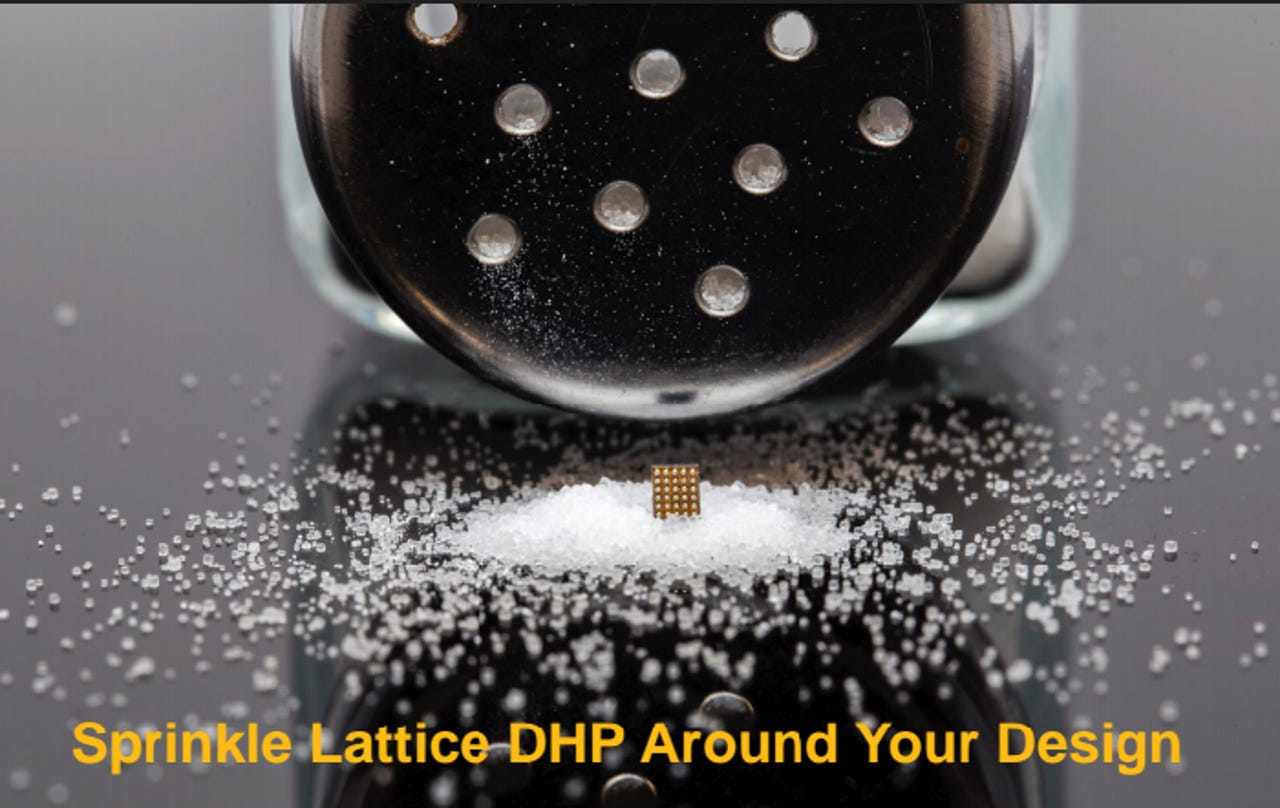Lattice Semiconductor advances FPGA capabilities


This image shows the size of Lattice's iCE40 UltraPlus FGPA.
As the demand for localized processing has grown, FPGAs have offered a way to keep devices running without quickly draining the battery. Lattice Semiconductor, while it has a small share of the FPGA market, has distinguished itself by reducing its FPGA power draw down to the microwatt level, which no one else has matched.
Now, as the IoT market is set to take off, Lattice is releasing a new FPGA that not only offers low power usage, but it also offers manufacturers ways to add localized predictive functionality to devices, as well as interactive capabilities like eye tracking or voice recognition. One key value proposition is Lattice's promised time to market -- while it may take as long as 15 months to develop a new solution with an Application Specific Integrated Circuits (ASICs), Lattice is promising to bring that down to weeks.
The iCE40 UltraPlus, which will go into production in about a month, delivers eight times more memory (1.1 Mbit RAM) than previous generations of the iCE40 FPGA family. It delivers twice the digital signal processors (8x DSPs), as well as improved I/Os.
These key enhancements should be valuable for a range of devices, Lattice says, including security and surveillance products, consumer goods with human-machine interfaces (HMIs), wearables, drones, 360 cameras, and smartphones.
The iCE40 family of FPGAs has existed for a couple of years, with Lattice shipping more than 1 million devices a day for devices like cameras and smartphones.
The UltraPlus's improved I/Os support a range of capabilities. For instance, its MIPI D-PHY support powers displays and is used to interface to a majority of image sensors found in phones.
Its flexible I/Os enable a more distributed heterogeneous processing (DHP) architecture. A distributed processing architecture allows a manufacturer to have dedicated resources in a device for each functionality, whether it's iris detection or motion sensing. The optimized architecture allows for better energy usage and improved responsiveness, enabling more predictive capabilities.
Meanwhile, with the ability to capture, process and store data locally, the UltraPlus aims to solve challenges for edge devices. For instance, in any IoT device, the wireless radio is typically the most power-hungry as it continuously transmits data. Yet with the ability to store data locally, there's no need to transmit data nonstop.